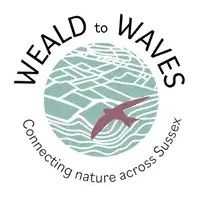Conservation Grazing in Sussex
By Sam Joy - 01 May 2025
Conservation Grazing in Sussex: Meat for Nature Recovery
Today, meat consumption is widely recognised as a major contributor to biodiversity loss and climate change, particularly through industrial-scale production and deforestation. While these impacts are serious and shouldn’t be overlooked, a different method of livestock management is challenging this narrative. Conservation grazing using traditional local breeds is changing the way we think about meat, not as a threat to biodiversity, but as a tool for its recovery.
Sussex is home to a range of rare and nationally important habitats, including exceptionally biodiverse chalk grasslands. These grasslands can support up to 40 species of flowering plant per square metre along with diverse invertebrate communities such as bees, day-flying moths, and butterflies like the Adonis blue and Chalkhill blue. The UK holds around 5% of the world’s chalk grasslands, with 2,600 hectares found in Sussex alone. While this remains a significant area, it represents just a fraction of what once existed. Since the Second World War, agricultural intensification, development and abandonment have led to an estimated 80% loss of this precious habitat.
What is Conservation Grazing?
Grazing livestock is critical for the preservation and restoration of chalk grasslands, but it must be done with care. If managed poorly, grazing can lead to further degradation. Conservation grazing is a targeted approach that uses livestock, often local traditional breeds, to manage vegetation. Through their varied grazing behaviours, these animals can prevent a small number of plant species and particularly vigorous grasses from dominating and remove unwanted plants, promoting a greater diversity. This management can be applied across a range of habitats including wood pasture, heathland, and wet meadows.
Different livestock have distinct grazing methods, each influencing vegetation and habitats in unique ways. Choosing the right species, or combination of animals, along with careful timing of grazing is key to achieving specific conservation outcomes.
Cattle
Cattle use their long tongues to wrap around clumps of tall vegetation, meaning they do not tend to graze close to the ground. Their wide mouths make them less selective grazers, so are less likely to target specific flower heads or delicate herbs, a crucial advantage for maintaining the botanical diversity of chalk grassland. Their large size enables them to access areas where other animals cannot reach, helping them to control scrub encroachment through browsing and trampling, which is essential for preserving an open grassland structure.
Sheep
Sheep are effective at maintaining short, open swards characteristic of chalk grasslands. This type of grazing helps prevent the dominance of coarse grasses and in turn allows low-growing wildflowers to thrive. However, they must be managed with care. As selective grazers, sheep often favour tender forbs (herbaceous flowering plant) and flower heads, which can lead to overgrazing and a decline in botanical diversity if not properly controlled. Therefore, sheep are most effective when used as part of a mixed grazing system alongside cattle or ponies.
Ponies
Ponies have forward-facing incisors allowing them to graze close to the ground much like rabbits. This grazing style helps maintain the short, varied turf structure typical of chalk grassland. They will leave small ungrazed areas called latrines, which provide valuable habitat for insects. Hardy traditional breeds such as Exmoor ponies are well suited to conservation grazing, capable of foraging on tougher plants such as bracken and rush and can limit scrub encroachment by browsing woody shrubs and young saplings.
Goats
Goats are primarily browsers, using their flexible upper lip to selectively forage on a wide range of vegetation. They are particularly effective for scrub management as they prefer woody plants over grasses, so can control species including brambles, gorse, and saplings. Their natural climbing ability allows them to access areas that sheep and cattle cannot reach, making them useful for managing areas of rough terrain. Goats will also graze on thistles and tough plants that other livestock avoid.
Traditional Breeds
Local and traditional breeds are commonly used for conservation grazing as modern commercial breeds are not suited to this role. These older breeds evolved with habitats such as chalk grassland and are well adapted to managing them. Their grazing behaviours tend to be better suited to maintaining habitat diversity, and they are typically hardier, able to live outdoors year-round with little to no supplementary feed. This makes them both ecologically and economically well suited to low-input, conservation-focused systems.
Small-Scale Abattoir Problems
The number of small-scale abattoirs in Sussex has declined significantly, with only one now serving the entire county. This presents a major challenge for farmers using traditional or native breeds in conservation grazing. These animals are often smaller or slower growing than commercial livestock and frequently fall outside strict specifications required by large-scale abattoirs. Consequently, many are not accepted or must be sold into the wholesale market, meaning farmers are unable to get their meat back for local sale. This both undermines the economic viability of conservation grazing and limits the ability to promote and market the meat as a high-quality, local product.
Farmers are now having to travel further to process their livestock, adding strain to already limited time and resources. For many, especially smaller farms, this makes continuing habitat management increasingly difficult. Further closures of small-scale abattoirs could be detrimental to traditional farming practices in Sussex farmers as well as the rare and ecologically important habitats that depend on conservation grazing to survive.
The Sussex Grazed Project
The Brighton & Hove Food Partnership is working with local farmers on a meat box scheme as part of the National Trust’s Changing Chalk Project. The scheme sells meat from animals involved in conservation grazing on chalk grasslands between Shoreham and Eastbourne. By supporting this approach, the project helps reduce food miles, promotes low-impact land management, supports local farmers, and contributes to the restoration and protection of Sussex’s chalk grasslands.

